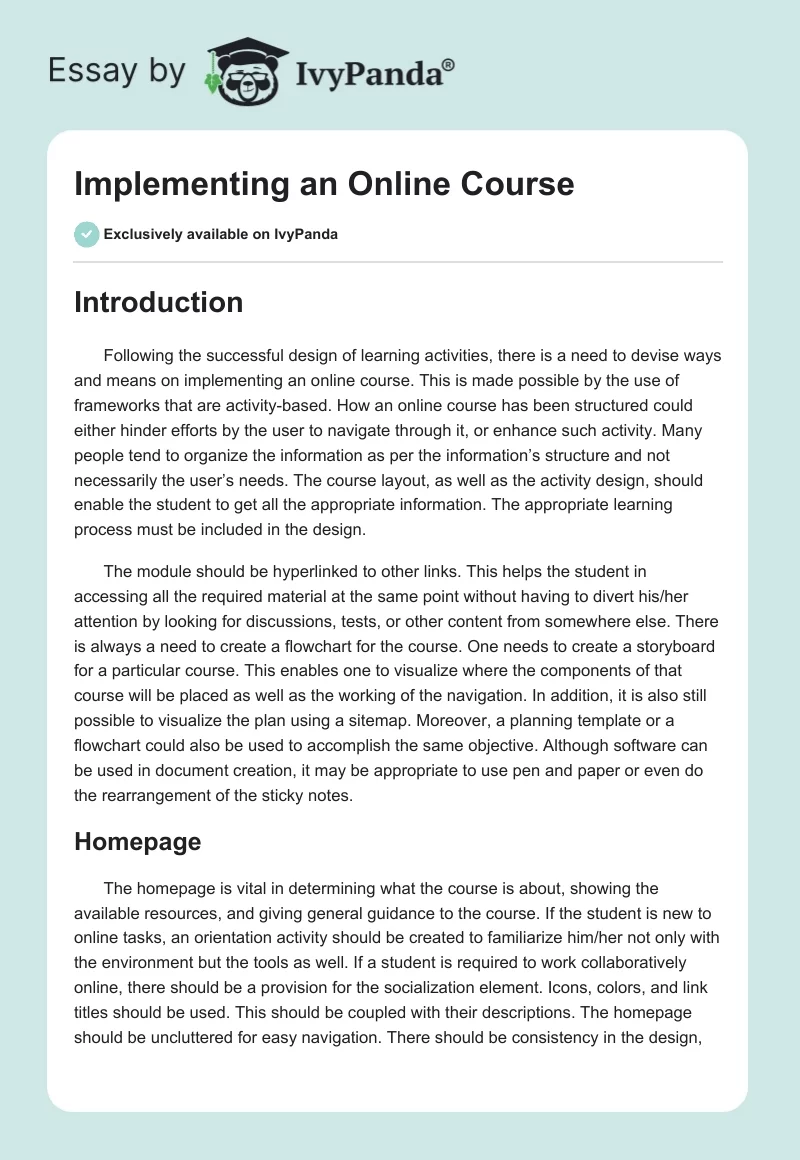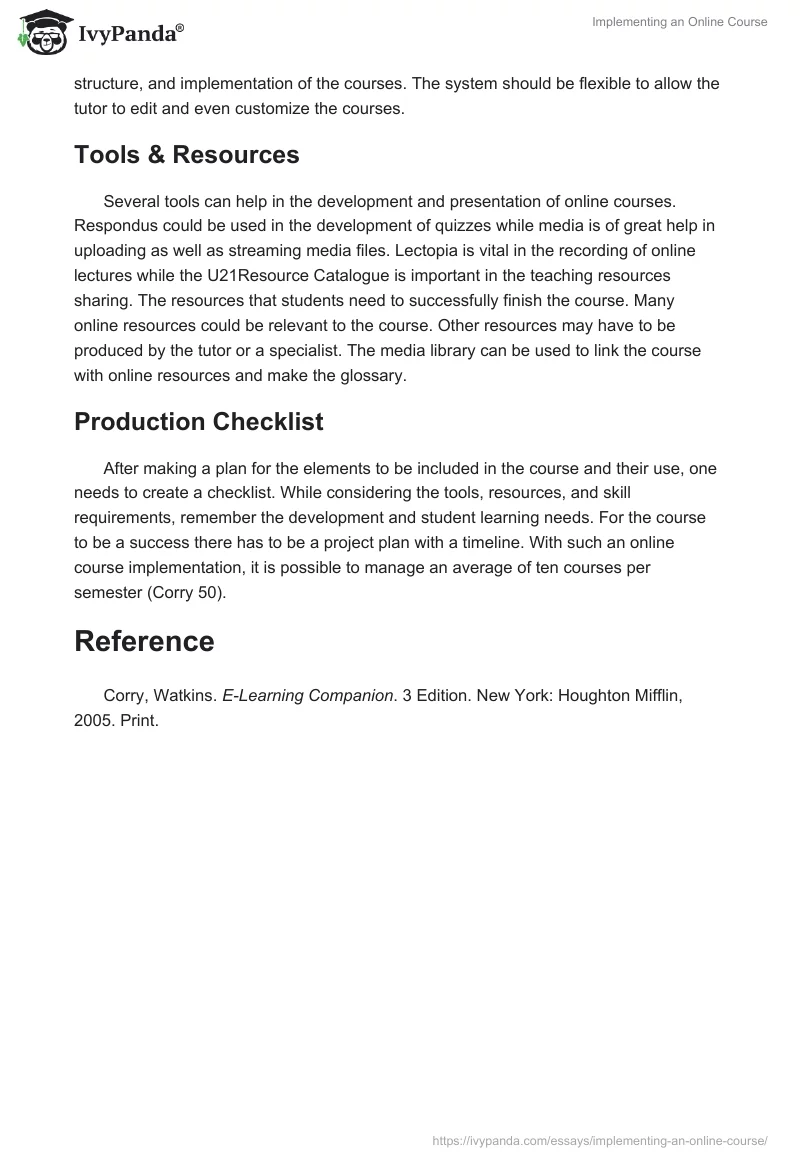Introduction
Following the successful design of learning activities, there is a need to devise ways and means on implementing an online course. This is made possible by the use of frameworks that are activity-based. How an online course has been structured could either hinder efforts by the user to navigate through it, or enhance such activity. Many people tend to organize the information as per the information’s structure and not necessarily the user’s needs. The course layout, as well as the activity design, should enable the student to get all the appropriate information. The appropriate learning process must be included in the design.
The module should be hyperlinked to other links. This helps the student in accessing all the required material at the same point without having to divert his/her attention by looking for discussions, tests, or other content from somewhere else. There is always a need to create a flowchart for the course. One needs to create a storyboard for a particular course. This enables one to visualize where the components of that course will be placed as well as the working of the navigation. In addition, it is also still possible to visualize the plan using a sitemap. Moreover, a planning template or a flowchart could also be used to accomplish the same objective. Although software can be used in document creation, it may be appropriate to use pen and paper or even do the rearrangement of the sticky notes.
Homepage
The homepage is vital in determining what the course is about, showing the available resources, and giving general guidance to the course. If the student is new to online tasks, an orientation activity should be created to familiarize him/her not only with the environment but the tools as well. If a student is required to work collaboratively online, there should be a provision for the socialization element. Icons, colors, and link titles should be used. This should be coupled with their descriptions. The homepage should be uncluttered for easy navigation. There should be consistency in the design, structure, and implementation of the courses. The system should be flexible to allow the tutor to edit and even customize the courses.
Tools & Resources
Several tools can help in the development and presentation of online courses. Respondus could be used in the development of quizzes while media is of great help in uploading as well as streaming media files. Lectopia is vital in the recording of online lectures while the U21Resource Catalogue is important in the teaching resources sharing. The resources that students need to successfully finish the course. Many online resources could be relevant to the course. Other resources may have to be produced by the tutor or a specialist. The media library can be used to link the course with online resources and make the glossary.
Production Checklist
After making a plan for the elements to be included in the course and their use, one needs to create a checklist. While considering the tools, resources, and skill requirements, remember the development and student learning needs. For the course to be a success there has to be a project plan with a timeline. With such an online course implementation, it is possible to manage an average of ten courses per semester (Corry 50).
Reference
Corry, Watkins. E-Learning Companion. 3 Edition. New York: Houghton Mifflin, 2005. Print.


